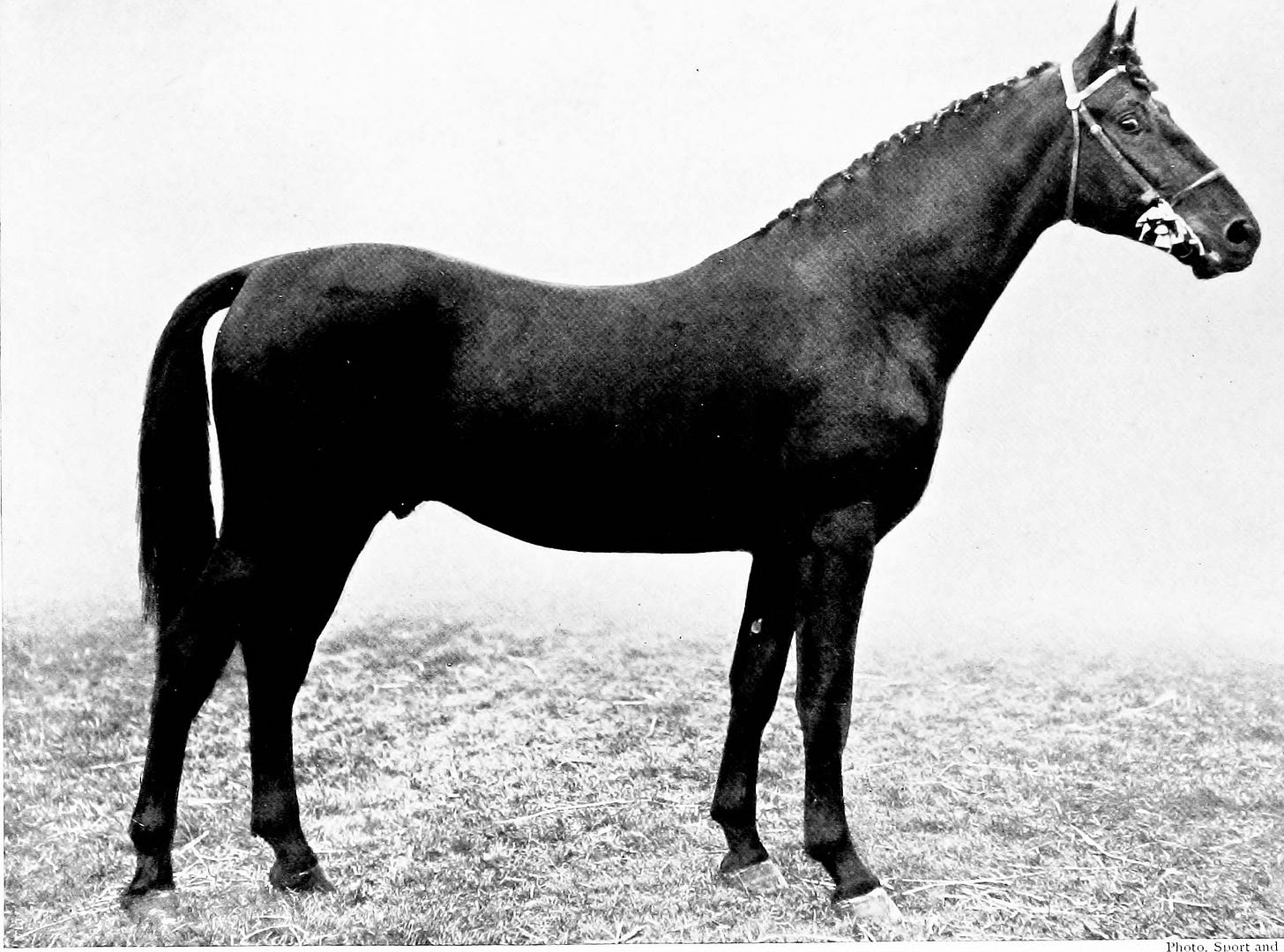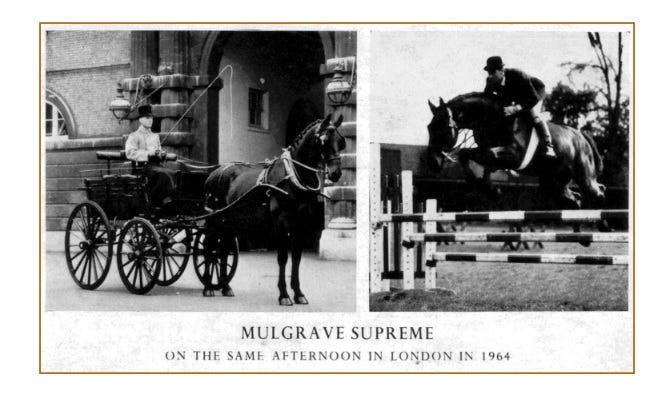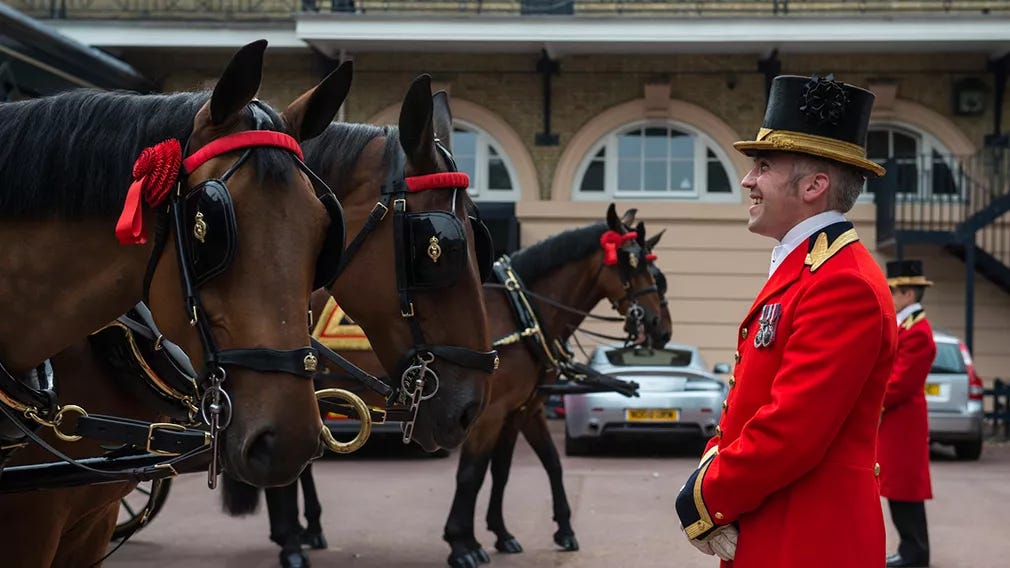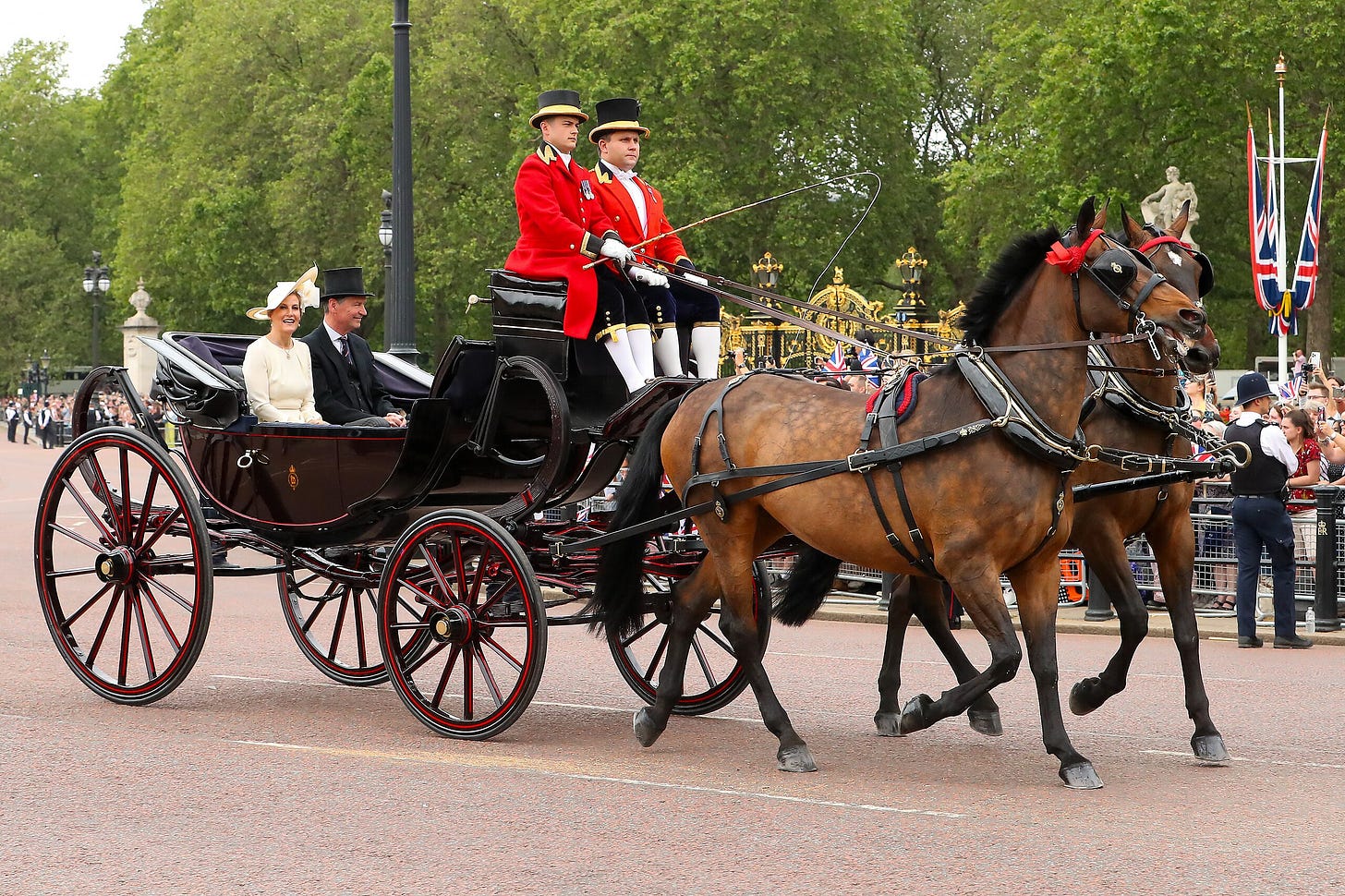The Cleveland Bay: Rescued by a Queen's Devotion
How the Late Queen's Passion for Conservation Helped Rescue England’s Oldest Horse Breed from Extinction
The Cleveland Bay traces its roots back to the 17th century in the Cleveland area of Yorkshire, England. Native bay-colored mares—referred to as Chapman Horses—were bred with imported Barb and Andalusian stallions to produce an adaptable packhorse for farm work. Later in the 18th century, when there was a greater need for lighter type horses, Thoroughbred and Arabian blood was introduced, resulting in a flashy carriage horse lighter than the agricultural Andalusian/Barb/Chapman Horse type of the foundation stock.
It was not until 1883 that the Cleveland Bay Society was formed, a whole two centuries after the breed's original creation. The first ever stud book for Cleveland Bays was published in 1884, and the breed was soon exported to Australia, New Zealand, South Africa, the United States, India, Russia, France, Germany, and the European continent. Jumping across the pond, the breed was imported to Maryland, Virginia and Massachusetts in the early 19th century. The same year that the first stud book was produced. Virginia native Colonel Richard Henry Dulany created the Upperville Colt & Horse Show—which still exists today—as a place to proudly showcase his imported Cleveland Bay stallion and its resulting offspring. One year later, The Cleveland Bay Society of America was established. The association saw over 2,000 horses registered by 1907.
The breed even had a role in WWI as both a cavalry and artillery horse, with the War Office offering premiums on Cleveland Bay Stallions. Due to the war-depleting stock, the British Cleveland Bay Society opened their books to previously unregistered mares of Cleveland Bay type, including Yorkshire Coach Horses. The resulting offspring could be registered in the main stud book and compete in breed-specific shows. Despite their popularity for a near two centuries, numbers were severely reduced due to economic troubles caused by the Great Depression and the Second World War. Due to this, many breeders stopped, and by 1964 just four purebred stallions remained in the whole United Kingdom. The breed was near extinction—enter Queen Elizabeth II.
The Queen purchased the Cleveland Bay stallion, Mulgrave Supreme from the United States, arguably saving the breed from a total wipeout. She used the stallion to build up her own stock privately, before offering the stallion to the public.
In just 15 years, the number of stallions increased from four to 15, including part-breds. This revival coincided with the burgeoning popularity of the hunter/jumper scene in the 1960s and 1970s, further cementing the breed’s resurgence and relevance.
Today, the Queen’s eldest son, King Charles III, has continued his patronage of the Rare Breeds Survival Trust (RBST) since his accession to the throne—ensuring the work and passion of his mother and the RBST continues on. The RBST exists to promote and conserve rare breeds of livestock, like that of the Cleveland Bay.
Cleveland Bays Play an Important Royal Role
Since replacing the royal black Hanoverians in the 1920s, Cleveland Bays play quite an important role in day-to-day affairs. Among the two main types of carriage horses at the Royal Mews, Windsor Greys are used for transporting senior members of the royal family, while Cleveland Bays handle dignitary transport and other tasks.
Each day, two Cleveland Bays pull a Clarence Brougham to deliver post between Buckingham Palace and St James's Palace. Most of the bay horses in the Royal Mews, both purebred and crossbred Cleveland Bays, undergo extensive training to prepare them for drawing royal carriages. The King's Troop, Royal Horse Artillery, primarily uses bay-colored horses from various breeds, with Cleveland Bays often pulling limbers and caissons. The Queen's husband, Prince Philip, Duke of Edinburgh, used the Royal Mews' Cleveland Bays to compete in combined driving competitions, proving an athletic and hardy breed for driving.
The Effort to Save the Cleveland Bay is far From Over
The late horse-loving Queen can be credited with saving the historic breed, but numbers still remain low. Despite their versatility, the Cleveland Bay is considered a rare breed. The Cleveland Bay breed is classified as "critical" by multiple conservation organizations due to its low global population. The Livestock Conservancy estimates fewer than 500 Cleveland Bays worldwide, with under 200 annual registrations in the U.S. Similarly, the UK Rare Breeds Survival Trust reports fewer than 300 breeding females, and the Equus Survival Trust places the number of breeding females globally between 100 and 300. Approximately 135 purebred Cleveland Bays are registered in the U.S. and Canada, with smaller populations in Japan, New Zealand, and Australia. In 2006, the global population was estimated at 550, including about 220 mares, with fewer than 50 foals born the previous year. By 2020, Paul Bennett, director of the Coach and Livestock Department at Colonial Williamsburg, estimated the worldwide purebred population at around 1,000, including 220 in North America. However, issues like infertility in mares remain significant challenges.
Inbreeding is another concern, as a 2020 genetic study revealed that around 91% of stallion lines and 48% of dam lines have been lost in the modern breed, largely due to crossbreeding between 1900 and 2006. The study also found that three ancestors account for 50% of the breed’s genome, with 70% of maternal lines traced to three founder females and all paternal lines descending from a single stallion.
In North America, the Cleveland Bay Horse Society of North America (CBHSNA) reported 27 purebred foals born in 2023, a 145% increase compared to breeding seasons from 2013 to 2022. As of June 2024, there were 758 Cleveland Bay horses in North America, with 238 (32.4%) being purebreds and 520 (68.6%) partbreds.
With conservation efforts made by both Cleveland Bay societies in the USA and UK, plus the work of Colonial Williamsburg's breeding project and the many breeders around the world dedicated to this historic breed, the Cleveland Bay may one day reach normal numbers.
Further Reading
━━━━━━━━━━━━━━━
Genetic analysis of the endangered Cleveland Bay horse: A century of breeding characterised by pedigree and microsatellite data
16 Years of breed management brings substantial improvement in population genetics of the endangered Cleveland Bay Horse
A Stable Population: Foundation’s breeding program focuses attention on all-purpose horse popular in early America
Highlights of the Royal Mews
Sources
━━━━━━━━━━━━━━━
– Cleveland Bay Horse Society of North America
– Cleveland Bay Horse Society
– Cleveland Bay Horse Society of Australasia
– CW Rare Breeds
– Cleveland Bay Wikipedia
– Cleveland Bay Endeavor
– Rare Breeds Survival Trust (RBST)
Across the Royal Pond is a reader-supported publication available on Substack to free and paid subscribers. All opinions expressed are those of the author.
For business inquiries, comments and questions please contact: acrosstheroyalpond@gmail.com
All images used are for visual purposes only and are the property of their respective owners. If you would like a photo removed, please contact the author. The photo will be removed within 24-48 hours.
The official social accounts of the author are below, all other accounts claiming to be the author are fake.















